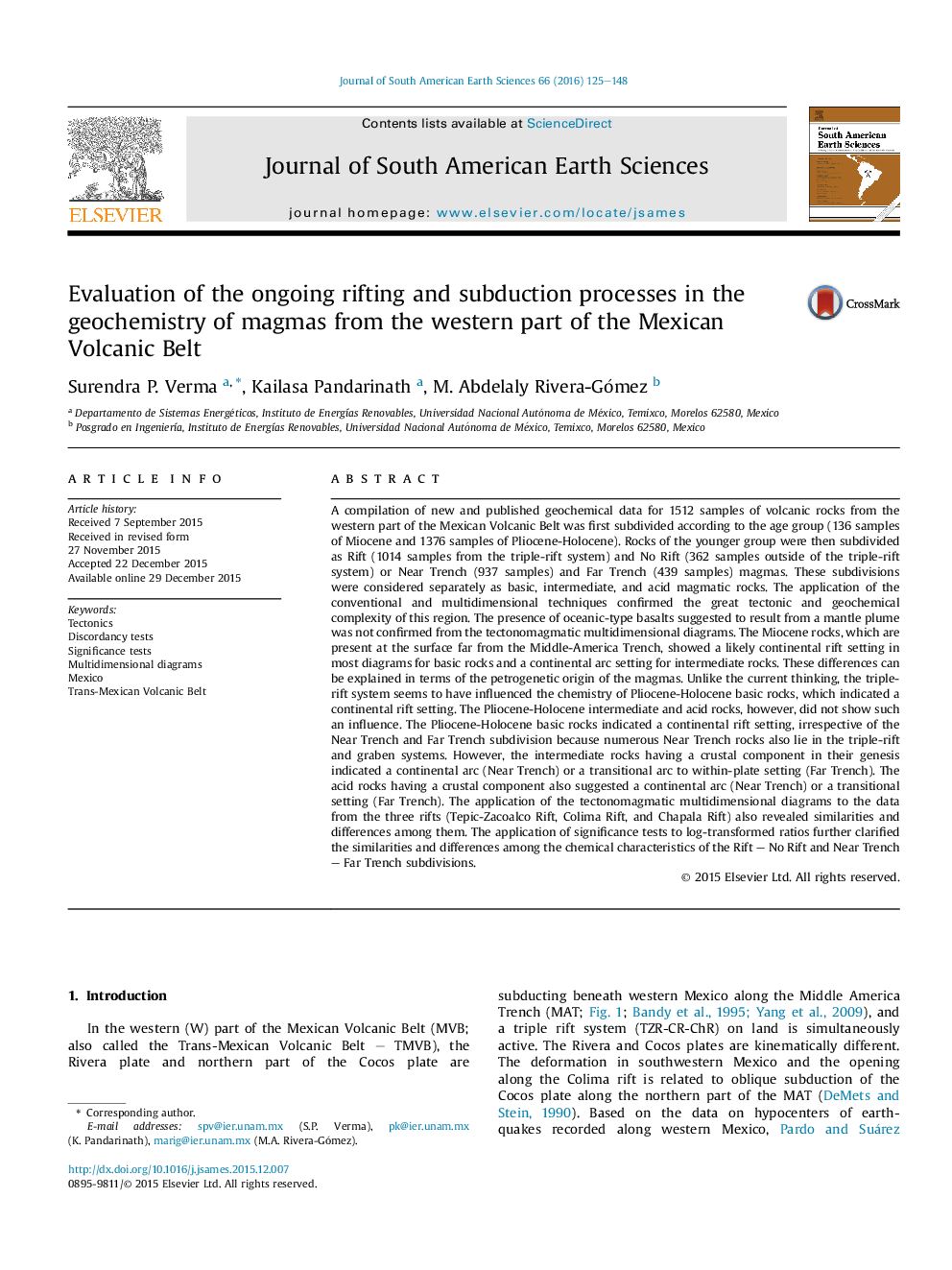| کد مقاله | کد نشریه | سال انتشار | مقاله انگلیسی | نسخه تمام متن |
|---|---|---|---|---|
| 4682095 | 1635144 | 2016 | 24 صفحه PDF | دانلود رایگان |
• Discriminant diagrams were applied to decipher complex tectonic setting of W-MVB.
• Miocene basic rocks indicate a rift and intermediate an arc setting.
• Crust beneath W-MVB is highly heterogeneous as evidenced from their REE contents.
• Triple-rift system does effect chemistry of W-MVB rocks; the three rifts differ.
• Basic and intermediate magmas show petrogenetic process-related tectonic settings.
A compilation of new and published geochemical data for 1512 samples of volcanic rocks from the western part of the Mexican Volcanic Belt was first subdivided according to the age group (136 samples of Miocene and 1376 samples of Pliocene-Holocene). Rocks of the younger group were then subdivided as Rift (1014 samples from the triple-rift system) and No Rift (362 samples outside of the triple-rift system) or Near Trench (937 samples) and Far Trench (439 samples) magmas. These subdivisions were considered separately as basic, intermediate, and acid magmatic rocks. The application of the conventional and multidimensional techniques confirmed the great tectonic and geochemical complexity of this region. The presence of oceanic-type basalts suggested to result from a mantle plume was not confirmed from the tectonomagmatic multidimensional diagrams. The Miocene rocks, which are present at the surface far from the Middle-America Trench, showed a likely continental rift setting in most diagrams for basic rocks and a continental arc setting for intermediate rocks. These differences can be explained in terms of the petrogenetic origin of the magmas. Unlike the current thinking, the triple-rift system seems to have influenced the chemistry of Pliocene-Holocene basic rocks, which indicated a continental rift setting. The Pliocene-Holocene intermediate and acid rocks, however, did not show such an influence. The Pliocene-Holocene basic rocks indicated a continental rift setting, irrespective of the Near Trench and Far Trench subdivision because numerous Near Trench rocks also lie in the triple-rift and graben systems. However, the intermediate rocks having a crustal component in their genesis indicated a continental arc (Near Trench) or a transitional arc to within-plate setting (Far Trench). The acid rocks having a crustal component also suggested a continental arc (Near Trench) or a transitional setting (Far Trench). The application of the tectonomagmatic multidimensional diagrams to the data from the three rifts (Tepic-Zacoalco Rift, Colima Rift, and Chapala Rift) also revealed similarities and differences among them. The application of significance tests to log-transformed ratios further clarified the similarities and differences among the chemical characteristics of the Rift – No Rift and Near Trench – Far Trench subdivisions.
Figure optionsDownload as PowerPoint slide
Journal: Journal of South American Earth Sciences - Volume 66, March 2016, Pages 125–148
